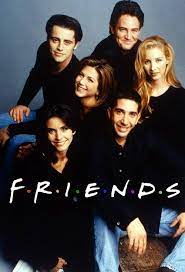The average teenager has an incredibly strong addiction to their phone, some being stronger than an addiction to alcohol. Despite the insanity of that hook, it’s depressingly true. People require entertainment, however, not all people have the time to watch a video because most videos on the internet are 8 minutes or longer for monetization purposes. The solution: Short form content that is easy to access, easy to watch, and easy to enjoy. Though, how do you keep people entertained enough so that they keep coming back? The answer is so simple, in fact, it’s the same method that parents use on toddlers; Only show what they want to see.

Social media platforms such as TikTok are very popular when it comes to short form content. TikTok was the main reason that reel’s or Youtube shorts exist. They proved that (unlike Vine sadly) short form content not only works, but it’s the best in the current video entertainment industry. According to Yaguara.co, “ …short-form videos are anticipated to represent 80% of all mobile data traffic in North America.” To put that in perspective, a study found that about 97% of Americans own a mobile phone (Consumer Affairs) which is about 322 million people. If we take 80% of that number we now have 257 million users that are predicted to regularly watch short form content.
One may ponder a very scholarly question about these statistics such as: How? How did short form content blow up so incredibly fast over the last couple of years? The answer lies in the digital, inescapable chain that is the algorithm. The term “algorithm” is used very broadly in today’s world so let me simplify; “a process or set of rules to be followed in calculations or other problem-solving operations, especially by a computer.” (Oxford) The word is not only used for social media, it’s used in every operating system, however, we’re discussing how TikTok is making your brain a pile of sludge. (or something like that) TikTok has an incredibly advanced algorithm, pinpointing what people like to watch incredibly fast. A little test to prove this is to create a new TikTok account and see how fast it can pull up favored videos. After doing the experiment myself, it took about 3 minutes for an accurate assumption to be made about my favored content. (really dumb memes)
With all that exposition out of the way, let’s dive into the real issue with how social media operates: Digital echo chambers. Now, the average person definitely has no clue what I’m talking about, in fact, they probably don’t even know how they are being tricked every time they open their app. An example, the average dystopian movie conveys a world where people are illegitimately controlled, the media they see and hear is heavily censored or monitored. Sometimes, these people only see what they want to see to make them feel more at ease. On an unrelated note, about every social media platform in current date exhibits the use of echo chambers. These chambers are designed to keep people coming back on the app, and so they find out what they like to see or hear and only reflect that to them, which then isolates them from any other forms of content. Said isolation can lead to a disconnection from other people, which may be what’s happening to the world right now.
On May 6, 2004, an incredibly life defining moment struck the hearts of Americans, cementing itself in the hearts of men, women, and children alike. That’s right, the finale for Friends aired, amassing over 50 million viewers. Friends got itself the fourth most watched finale in the world and still hold that title to this day. Now let’s take a look at the very mediocre drama of Grey’s Anatomy. This show has 19 seasons, soon to get a 20th and has been airing for years. No matter who you are you’ve at least heard of it, and if you haven’t, find the most basic white girl you know. This show had an overall collective of 37.9 million viewers, however, that wasn’t for its finale, that was just its total. Its 19th season finale only amassed 8.7 million viewers. How is there that big of a gap?

One could argue that the content of the shows are vastly different, and I agree. Friends is a sitcom with a lovable cast of characters that has many differences to appeal to every type of viewer, and Grey’s Anatomy exists. That, however, is not the reason. The reason is the time of release, or more specifically, the age of technology. Grey’s Anatomy released in an age where I get to choose what I want to watch so the creators didn’t try to make it appeal to everyone, they wanted to appease young adult women with a warped viewpoint about romance. Friends, however, was released during a time where people couldn’t necessarily choose what they wanted to watch, you could only watch what was on. The creators of Friends had to try to appease everyone with its characters and comedy, or in other words, they actually had to try. (unlike Grey’s Anatomy)
To get back on track, people were forced to think from another perspective and learn to enjoy things, while nowadays, people can just swipe away if they don’t like something instead of trying to understand it. To take it to a real world example, look at politics. People will pick a side and refuse to look at the other side, sometimes being violent about the matter. Those people go home and get on social media. Imagine a world where social media tries to show others a way to accept the other side, instead, apps like Facebook (or Meta if you’re weird) will show people reasons to hate the other side and why your side is better. (UVAToday)
It’s no surprise that echo chambers are stopping people from seeing different media or seeing other sides. If someone said, “Eat my shorts!” In the mid 90s, everyone would get the reference and could probably start a friendly conversation about a similar interest. Now, however, that amount of people is still high but significantly lower. Another example could be if I were to say, “That’s just a theory!” a decent chunk of people wouldn’t know that I would be referencing a YouTube channel with over 18.8 million subscribers. In fact, the inspiration for this article came from one of his videos.
Despite my obvious viewpoint on a specific show, I do see why people like it and see its strengths as a form of content. Instead of objectively hating, try to see from someone else’s perspective or why they view things how they do. Look up things that you don’t like or disagree with on TikTok so your algorithm can change and see if you can find common ground with it. Heck, try a different form of entertainment! The point I’m trying to say is; Always have an open mind, stay conscious of your own opinions and cynicism. It’s as George Bernard Shaw said, “Those who cannot change their minds cannot change anything”.
